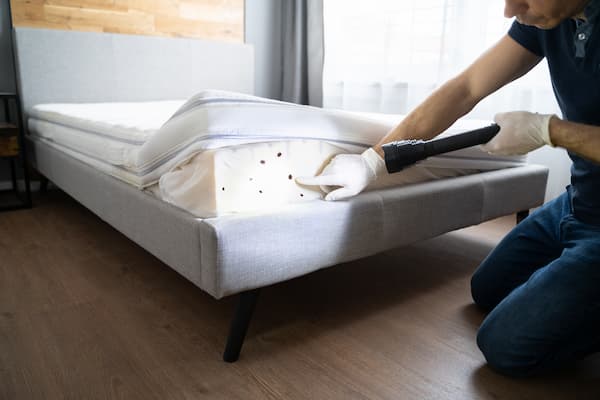Efficient Bug Control Approaches to Fight Bed Bug Infestations
As the frequency of bed insect infestations proceeds to climb, the requirement for effective pest control strategies has come to be extra pressing. By employing a mix of positive procedures and targeted treatments, it is possible to take on bed insect infestations efficiently.
Comprehending Bed Bug Actions
Bed insect actions is an important facet to understand when developing efficient parasite control techniques. Comprehending just how bed bugs behave is essential in getting rid of problems successfully.
Bed bugs replicate swiftly, with females laying hundreds of eggs in their lifetime. Their capability to endure for months without feeding makes them resistant pests that call for detailed treatment techniques for obliteration. Additionally, bed bugs exhibit a behavior referred to as "terrible insemination," where males pierce the women' abdomen to inseminate, resulting in prospective infections and physical damage.
Assessment and Discovery Methods
Understanding bed pest habits lays the groundwork for applying efficient inspection and discovery methods in combating problems. When carrying out evaluations for bed pests, it is vital to be extensive and systematic. Bed insects are adept at concealing in cracks and holes, so using a flashlight and a magnifying glass can aid in spotting their visibility.
In situations where aesthetic evaluations might not be conclusive, using detection pet dogs educated to ferret out bed pests can be highly efficient. These pooches have an amazing capacity to identify problems, even in hard-to-reach locations. Thermal cameras are an additional advanced tool that can identify heat trademarks released by bed bugs, helping in situating covert populaces. Overall, a combination of aesthetic evaluations, checking devices, discovery dogs, and thermal cameras can improve the precision and performance of identifying bed insect invasions.
Non-Chemical Therapy Choices
Carrying out non-chemical treatment options is vital in managing bed insect problems while prioritizing ecological safety and security and sustainability. Warmth therapy is a commonly utilized non-chemical approach that entails elevating the temperature level in plagued areas to levels lethal to bed pests. This strategy passes through deep into furniture, mattresses, and wall cavities, effectively eliminating bed pests in any way life stages. Another non-chemical approach is heavy steam treatment, which entails making use of high-temperature heavy steam to kill bed pests on get in touch with. Vacuuming infested locations with a high-powered vacuum cleaner can also help lower bed insect populations by literally removing them from surfaces. In addition, enclosing cushions and box springtimes with bed bug-proof covers can trap existing bed bugs inside and avoid brand-new invasions. The use of diatomaceous earth, a natural pesticide, can be efficient in eliminating bed bugs by why not check here harming their outer safety layer. By employing these non-chemical therapy options, people can combat bed insect infestations successfully while minimizing ecological impact.
Effective Chemical Control Techniques

Among one of the most usual courses of chemicals used for bed pest control is pyrethroids. These chemicals work by disrupting the bed bugs' nerves, eventually leading to paralysis and death. Over time, bed pests have actually created resistance to pyrethroids, necessitating the usage of alternate chemicals such as neonicotinoids, desiccants, or insect development regulators.

Preventing Future Problems
To decrease the risk of future bed insect invasions, aggressive preventative measures must be applied. One important step is to frequently inspect potential entry points for bed insects, such as fractures in wall surfaces, furnishings joints, and electric outlets. Securing these entry factors with caulk or other suitable materials can help protect against bed bugs from gaining accessibility to your space. In addition, decreasing mess in your home can eliminate hiding spots for bed pests, making it easier to identify and deal with any kind of prospective problems early on.
One more effective safety net is to routinely clean and declutter your living locations. Vacuuming carpetings, carpets, and furniture can help eliminate any bed pests or eggs that might exist. Washing and drying bed linens, bed linens, and apparel above heat can additionally eliminate any type of bed bugs or eggs that may be concealing in these things. Additionally, being careful when purchasing second-hand furnishings or garments can aid prevent the intro of bed see pests right into your home.
Conclusion
